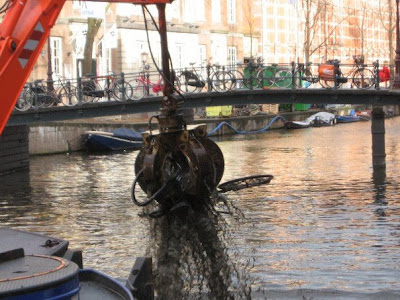Trying to write an account of my bike trip last month has ended up taking longer than I expected. Oh well, something else in the meantime.
Kurt Gödel, a man operating in a different dimension than most of us. Image from Wikipedia
A few weeks ago, I stumbled across a fun paper,
Gödel's Second Incompleteness Theorem Described in Words of One Syllable. The paper's behind a paywall (sadly) but here's a taste of the sort of writing we get:
Now: two plus two is not five. And it can be proved that two plus two is not five. And it can be proved that it can be proved that two plus two is not five, and so on.
Thus: it can be proved that two plus two is not five. Can it be proved as well that two plus two is five? It would be a real blow to math, to say the least, if it could. If it could be proved that two plus two is five, then it could be proved that five is not five, and then there would be no claim that could not be proved, and math would be a lot of bunk.
So, we now want to ask, can it be proved that it can't be proved that two plus two is five? Here's the shock: no, it can't.
He manages for nearly a page of this. Impressive! It's actually one of the better descriptions I've found, and certainly much shorter (if less fun) than working your way through Godel, Escher, Bach.
So, the natural exercise is to try and do the same with my own research. So, here goes:
********
There are a lot of times you might want to aim sound at some spot. It can help you try and find a crack in a plane's wing, say, or to look in you to see if your health is good. You can build a few sorts of things to do this: for one, you can make a lens. For two, have a bunch of spots that make sound that are timed just right, so that the right place all the sound adds up and gets loud, while far from that the sound waves don’t mix well and it all ends up soft and still. The last one is a bit hard to do: you have to know just when the sounds will play, and since the best way to make the sound will use a kind of clay that does not move that much, it’s hard to make it loud. But there’s a quite good thing with this way—you can choose where to aim the sound, while a lens will be fixed and thus can just aim at one spot.
My work is to build a new kind of way to aim sound, one that is based on how sound moves through a bunch of steel balls placed in a row. In most stuff, the key kind of sound is a tone: the stuff moves back and forth, and the sound goes through at one speed. All other sound can be made if you take these key sounds and mix them up. But, for the balls, the sound goes through in a new way; as a short pulse, one that can be quite strong as well. What’s more, you can change how fast the pulse goes if you squeeze the balls first*. The more you squeeze, the more swift the pulse.
This lets us make the new type of tool to aim sound. First, get a bunch of rows of balls and put them on a thing you want to aim sound in. Next, squeeze the rows in a way so that when the sounds hit the thing, they hit at just the right time so the sound they make will add up at the right place. Last, give the balls a good whack** to make the pulse. And that’s all there is to it.
I have two big goals with my work. One, I need to show that all these words are true, and that you can make a tool that will aim sound in the way I just said. And two, there are some ends to how well this can work, and I need to learn where these bounds are.
********
An "-ing", an "-ing", my kingdom for an "-ing".
EDITED 12/5 as someone pointed out I had a few 2-syllable words (basic, away, about, uses) in there. It's fixed now. Thanks Crowder!
12/6 Eve pointed out "inside" and "pulses". Thanks!
*My research also has pretty limitless potential for double entendre.
** See above.





